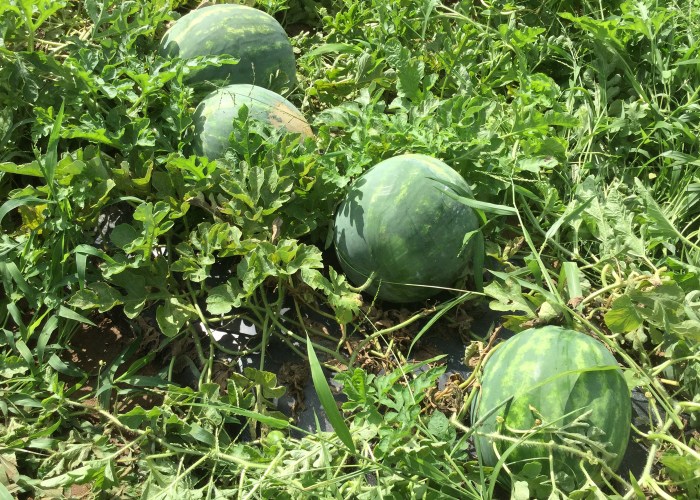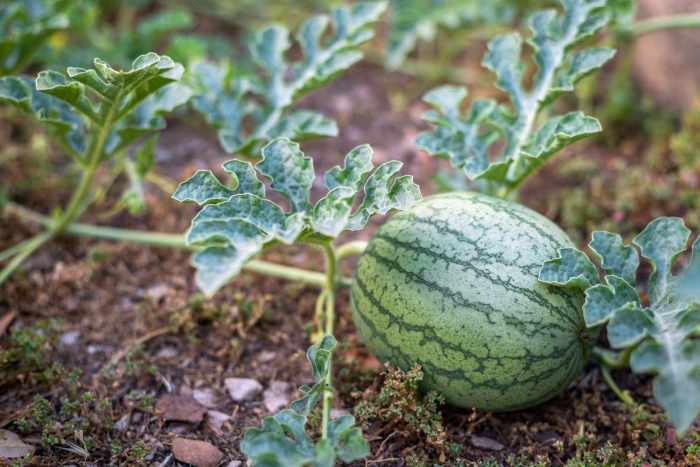How to Plant Melon Seeds A Gardeners Guide
Choosing the Right Melon Seeds
How to plant melon seeds – Selecting the appropriate melon seeds is crucial for a successful harvest. Consider factors like your climate, available space, and personal preferences when making your choice. This section will guide you through selecting high-quality seeds and understanding the differences between heirloom and hybrid varieties.
Popular Melon Varieties
The following table lists some popular melon varieties suitable for home gardening, along with their growth habits, ideal climates, and maturity times. Remember that these are general guidelines, and specific conditions may vary based on your location and growing practices.
| Variety | Growth Habit | Climate | Maturity Time (Days) |
|---|---|---|---|
| Watermelon (e.g., Sugar Baby) | Vining | Warm, sunny | 75-85 |
| Cantaloupe (e.g., Hale’s Best) | Vining | Warm, sunny | 70-80 |
| Honeydew Melon | Vining | Warm, sunny | 80-90 |
| Muskmelon (e.g., Charentais) | Vining | Warm, sunny | 75-85 |
Seed Quality and Sourcing
High-quality seeds are essential for successful germination and plant growth. Look for seeds that are plump, firm, and free from damage. Reputable seed companies, both online and local garden centers, are reliable sources for high-quality seeds. Always check the seed packet for information on germination rates and storage recommendations.
Heirloom vs. Hybrid Melon Seeds
Heirloom seeds are open-pollinated, meaning the seeds from the fruit will produce plants similar to the parent plant. They often possess unique flavors and characteristics but may have lower yields or be more susceptible to diseases. Hybrid seeds are created by cross-pollinating different varieties to produce plants with desirable traits like disease resistance and high yields. However, seeds saved from hybrid melons will not produce plants with the same characteristics as the parent plant.
Preparing the Soil and Planting Site
Proper soil preparation is key to growing healthy melon plants. Melons thrive in well-drained, fertile soil with a slightly acidic to neutral pH. Sunlight and appropriate spacing are also critical factors to consider.
Ideal Soil Conditions
Melons require soil with a pH between 6.0 and 6.8. The soil should be well-drained to prevent root rot. Sandy loam or silty loam soils are ideal, as they provide good drainage and aeration. Amend heavy clay soils with organic matter like compost to improve drainage and texture.
Preparing a Planting Bed
- Choose a sunny location with at least six hours of direct sunlight per day.
- Clear the area of weeds, rocks, and debris.
- Till the soil to a depth of 12-18 inches.
- Incorporate 2-4 inches of compost or well-rotted manure into the soil to improve fertility and drainage.
- Level the planting bed and water thoroughly.
Sunlight and Spacing

Source: msstate.edu
Melons need ample sunlight for optimal growth. Proper spacing between plants is essential to ensure good air circulation and prevent disease.
- Watermelons: 2-4 feet apart
- Cantaloupes: 18-24 inches apart
- Honeydew Melons: 2-3 feet apart
- Muskmelons: 18-24 inches apart
Sowing Melon Seeds
Melon seeds can be sown directly outdoors or started indoors. Direct sowing is simpler, but starting seeds indoors allows for an earlier harvest.
Direct Sowing vs. Starting Indoors
Direct sowing is suitable for warmer climates where the soil temperature is consistently above 70°F (21°C). Starting seeds indoors is recommended for cooler climates or to get a head start on the growing season.
Starting Melon Seeds Indoors
- Fill seed trays with a seed-starting mix.
- Sow seeds ½ inch deep and 2 inches apart.
- Cover with a thin layer of potting mix.
- Water gently and place in a warm, sunny location.
- Transplant seedlings outdoors after the last frost, when they have 2-3 true leaves.
Direct Sowing Melon Seeds Outdoors, How to plant melon seeds
- Prepare the soil as described above.
- Make holes 1 inch deep and 2 inches apart.
- Plant 2-3 seeds per hole.
- Cover with soil and water gently.
- Thin to one seedling per hole once they have emerged.
Melon Seedling Care and Growth: How To Plant Melon Seeds
Providing optimal conditions for germinating melon seeds and nurturing seedlings is essential for a successful harvest. This involves maintaining appropriate temperature, humidity, watering, and fertilization.
Ideal Temperature and Humidity
Melon seeds germinate best at temperatures between 70-85°F (21-29°C). Maintain consistent moisture levels but avoid overwatering, which can lead to damping-off. Good air circulation helps to prevent fungal diseases.
Watering and Fertilizing
Water young melon plants regularly, keeping the soil consistently moist but not waterlogged. Apply a balanced fertilizer once the seedlings have developed a few true leaves, following the package instructions.
Common Seedling Problems
Damping-off, a fungal disease, can kill young seedlings. Preventative measures include using sterile potting mix, providing good air circulation, and avoiding overwatering. Pests such as aphids and spider mites can also damage seedlings. Regular monitoring and prompt treatment with insecticidal soap or neem oil can control these pests.
Supporting Melon Plants and Pest Control

Source: thespruce.com
Many melon varieties are vining plants that require support to grow effectively. Pest and disease control is crucial for a healthy crop. Crop rotation helps prevent disease buildup in the soil.
Building Trellises or Supports
A simple trellis can be made using sturdy stakes driven into the ground and connected with strong twine or netting. For larger vines, a more robust structure might be needed, using wooden posts and stronger supports. Detailed descriptions of materials and construction techniques can be found in various gardening resources.
Common Melon Pests and Diseases
| Pest/Disease | Symptoms | Organic Control | Chemical Control |
|---|---|---|---|
| Aphids | Small insects clustering on leaves, causing stunted growth | Insecticidal soap, neem oil | Systemic insecticides |
| Powdery Mildew | White powdery coating on leaves | Baking soda solution, sulfur spray | Fungicides |
| Downy Mildew | Yellowish spots on leaves, followed by browning | Copper fungicide (organic options available) | Fungicides |
Crop Rotation
Rotating crops helps prevent the buildup of pests and diseases in the soil. Avoid planting melons in the same location for consecutive years.
Harvesting and Storing Melons
Knowing when and how to harvest melons is essential to ensure optimal flavor and quality. Proper storage techniques will help maintain freshness.
Signs of Melon Ripeness
The signs of ripeness vary depending on the melon variety. Generally, ripe melons will have a deep color, a sweet aroma, and a slight give when gently squeezed. Watermelons will have a dull sound when thumped, while cantaloupes will have a slight softening at the stem end.
Harvesting Melons
Harvest melons carefully to avoid bruising. Use a sharp knife or pruning shears to cut the melon from the vine, leaving a small portion of the stem attached.
Storing Harvested Melons
Store melons at room temperature in a cool, dry place. Avoid refrigerating melons until they are fully ripe, as this can affect their flavor. Ripe melons can be stored for a few days to a week at room temperature.
Questions and Answers
Can I save seeds from my harvested melons to plant next year?
Yes, but only if you’re growing open-pollinated (heirloom) varieties. Hybrid melon seeds will not produce true-to-type plants from saved seeds.
What should I do if my melon seedlings are wilting?
Check the soil moisture. Wilting often indicates underwatering or overwatering. Also inspect for pests and diseases.
How long does it take for melon seeds to germinate?
Germination time varies depending on the variety and temperature, but generally takes 7-14 days.
My melon plants have yellowing leaves. What could be the cause?
Yellowing leaves can be caused by several factors including nutrient deficiencies (especially nitrogen), overwatering, or pests.
Planting melon seeds involves selecting healthy seeds and providing well-drained soil. Similar preparation is needed for other fruits, such as when learning how to plant guava seeds , which also benefits from loose, fertile earth. Once established, both melon and guava plants require consistent watering and sunlight for optimal growth and fruit production.
When is the best time to plant melon seeds?
Plant melon seeds after the last expected frost when soil temperatures are consistently warm (at least 70°F or 21°C).





















